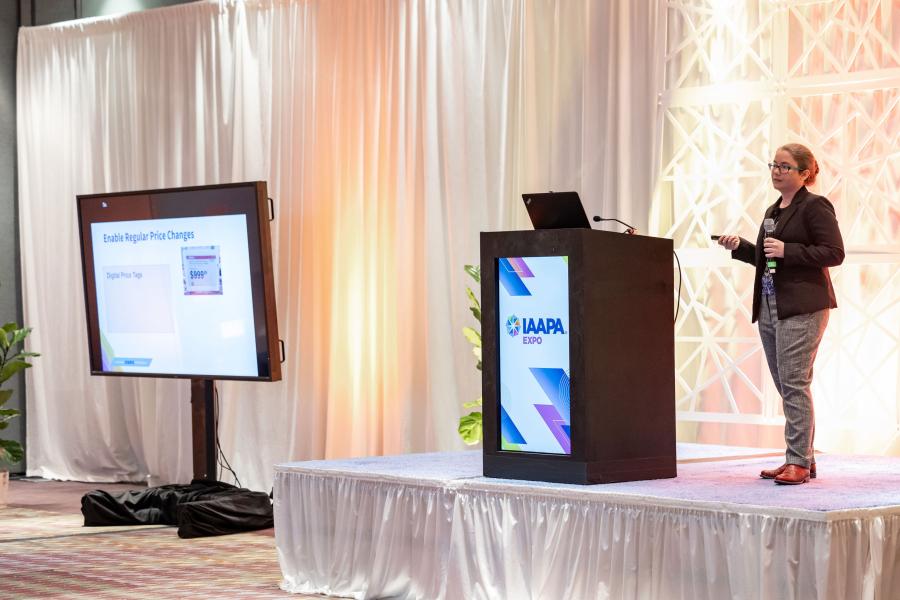To help generate additional revenue from merchandising, attractions should focus on their operational tactics from the guest perspective, capitalize on the power of “shoppertainment,” and leverage analytics. That was the advice from Laura Iles, chief operating officer of Integrated Insight, at an EDUSession presentation during IAAPA Expo 2023 in Orlando.
Merchandising should always be approached through the lens of the consumer—regardless of an attraction’s size, emphasized Iles. Get out of the office, and walk the retail floor like a guest. Adopt a beginner’s mindset in search of your most exciting products. Can they be easily located? If not, consider their placement and whether they could be more prominently and strategically featured, she suggested.
Another suggestion is grouping items in ways that would resonate with guests. For example, instead of segmenting by the type of product, such as toys, apparel, and jewelry, it makes sense to display them by brand or the characters they represent. Doing so could promote upsell opportunities.
Thinking like a consumer “will always set you up for success,” Iles said.
To demonstrate the effectiveness of incorporating entertainment into merchandising—a topic that folks in the attractions industry are familiar with—Iles cited the Lego Toy Store New York in Manhattan. Calling the retail outlet “best in class,” she shared some of the ways the store was designed to drive sales while creating a connection between consumers and the much-admired brand.
These include the Mosaic Maker, a photo booth-like experience that turns an image of a guest into a puzzle that they can assemble using Lego bricks. Similarly, the Minifigure Factory allows guests to create custom Lego figures using kid-friendly kiosks at the store. In the Brick Lab, guests enter an augmented reality space where they can build their own creations by interacting with the lights, sounds, music, and media projected onto the walls and floors. Customers then get to take home their personalized brick masterpiece.
The one-of-a-kind toys that visitors can create as part of the in-store experiences, Iles noted, net three or four more times the revenue than standard Lego products.
“There is a lot of opportunity just allowing guests to customize something by using a pre-set menu of options,” she said, adding that “shoppertainment” can significantly boost the bottom line. “It’s difficult to put a value on that kind of brand engagement and brand loyalty.”
Moving on to analytics, the art of retail pricing and revenue management, Iles tried to soothe the fears of math-averse session attendees by saying that the process doesn’t have to be scary.
“It’s not an overly complicated calculus. It’s really about the basic fundamentals,” she assured the audience. “It‘s simply storytelling with data.”
As an example, attractions can determine an optimal price by comparing the prices charged for an item over a period of time and charting the number of items sold. It’s a matter of identifying what to measure, how often to measure it, and how to display the results in ways that make sense.
Among the data to consider might be inventory management, discounting bundling, and customer segmentation. But the “big kahuna,” according to Iles, is price elasticity. She encouraged session members not to set it and forget it, regarding price. Instead, they should approach pricing in a systematic, analytical, cross-departmental way to help maximize revenue.
“Use analytics to make informed decisions about your business,” Iles stressed.



